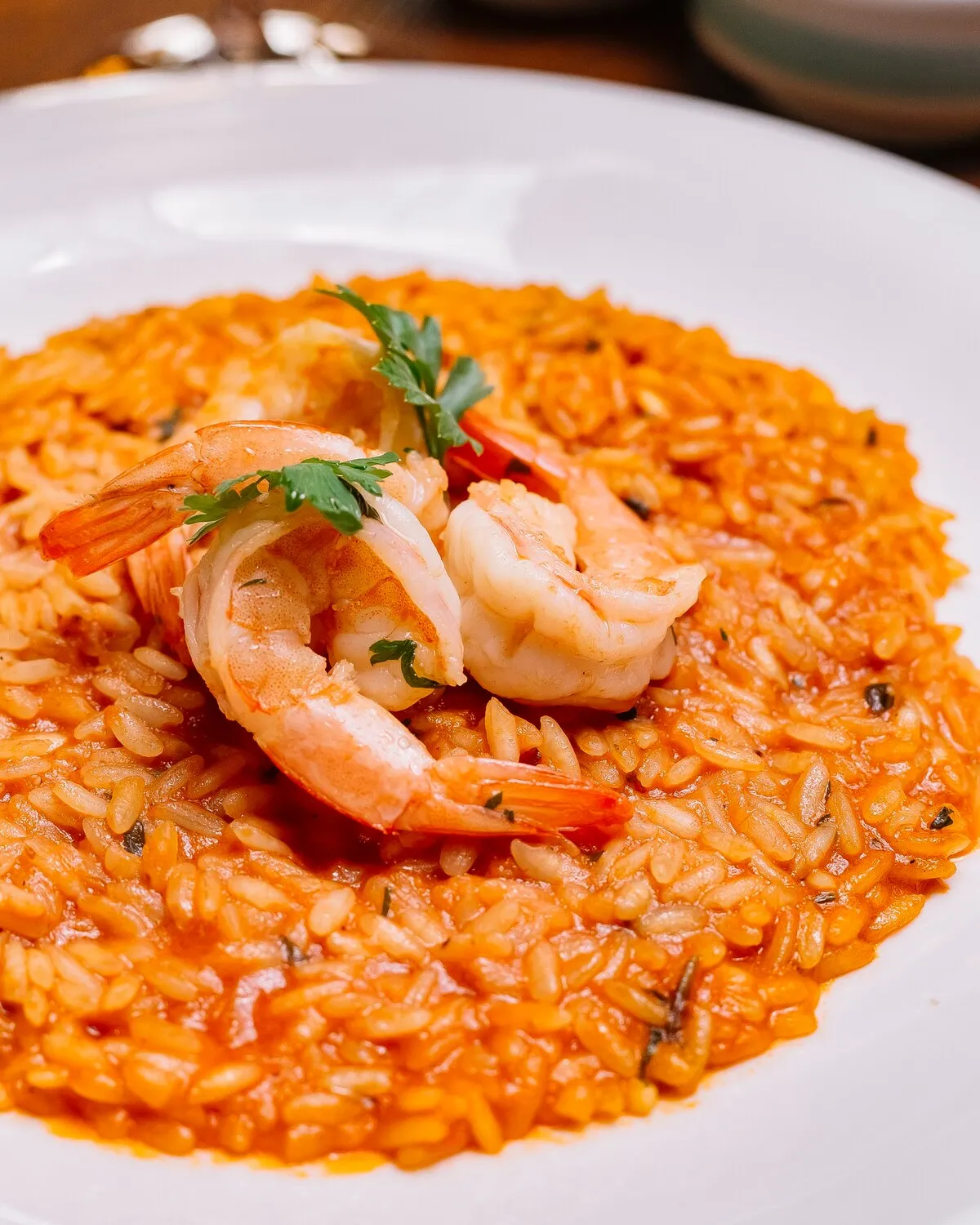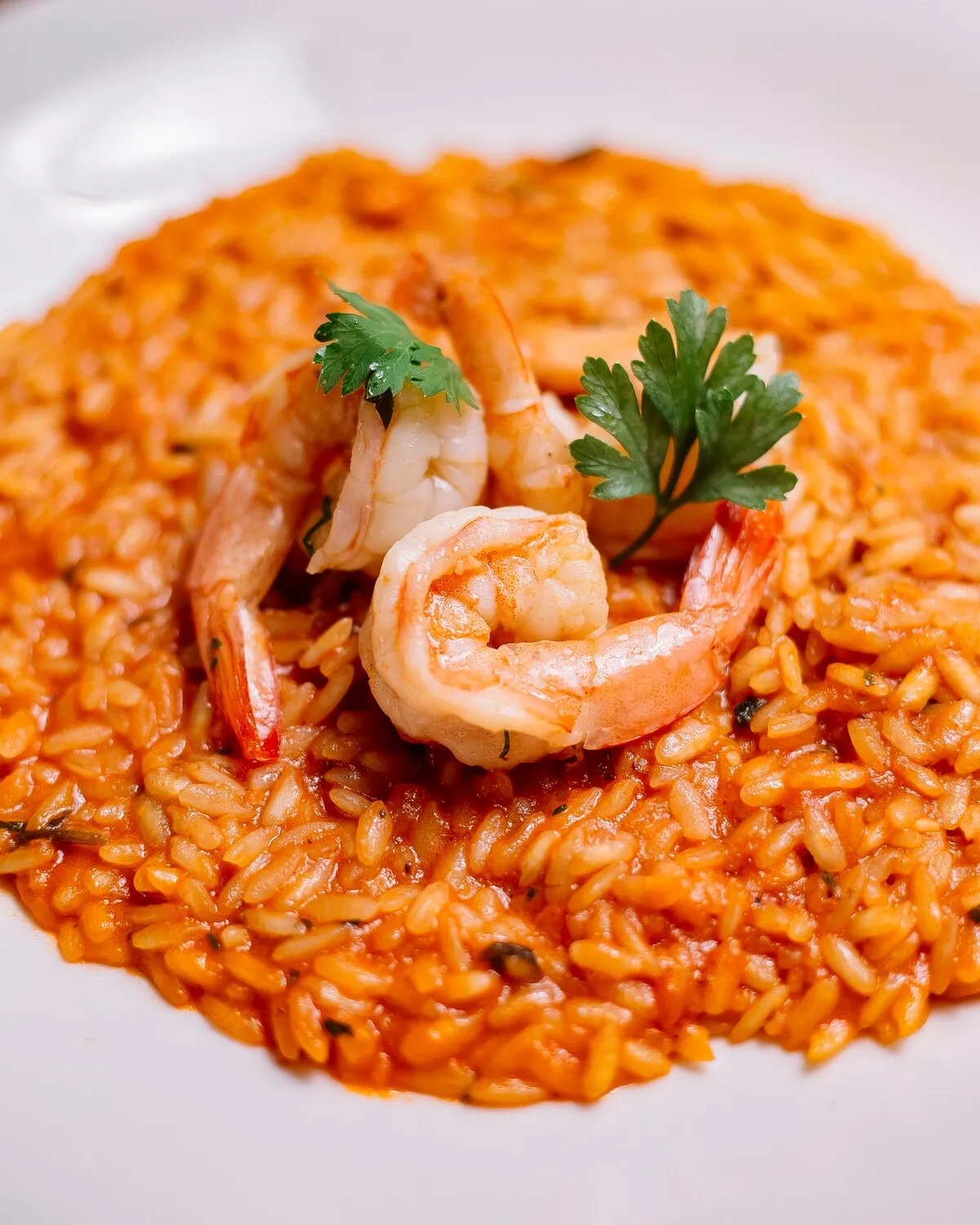
Risotto al Nero di Seppia
Black cuttlefish risotto, typical venetian dish.
Nutrition Facts
* The % Daily Value (DV) tells you how much a nutrient in a serving of food contributes to a daily diet. 2,000 calories a day is used for general nutrition advice.
Esprì - incontri di gusto
Risotto al Nero di Seppia reflects Venice's unique maritime history and its close relationship with the sea. The use of seafood and specifically cuttlefish ink highlights the city's reliance on the lagoon's resources and its trade routes that brought diverse ingredients and culinary techniques together. The dish likely evolved as a way to utilize all parts of the cuttlefish, minimizing waste and maximizing flavor in a simple, yet elegant preparation.
Risotto al Nero di Seppia is more than just a dish; it's a symbol of Venetian culinary identity and its close relationship with the sea. It represents resourcefulness, tradition, and a celebration of local ingredients.
Venetian Identity
The dish is deeply ingrained in Venetian culture, often served during special occasions and family gatherings. It showcases the city's culinary heritage and its unique connection to the lagoon.
Cicchetti Culture
While Risotto al Nero di Seppia is often enjoyed as a main course, smaller portions can sometimes be found as a component of 'cicchetti', Venetian tapas served in bacari (traditional Venetian bars).
Regional Variations
Although the basic recipe remains consistent, variations exist throughout the Veneto region, with some cooks adding different types of seafood or adjusting the seasoning to their personal preference.
Risotto al Nero di Seppia is characterized by its briny, subtly sweet, and intensely savory flavor profile. The cuttlefish ink imparts a unique oceanic depth, balanced by the creamy texture of the risotto.
The dominant flavor comes from the cuttlefish ink (nero di seppia), which lends a salty, slightly metallic, and undeniably seafood-forward taste. The ink also colors the rice a dramatic black. Other key ingredients include Arborio or Carnaroli rice (for creaminess), white wine (for acidity and aroma), onion and garlic (for aromatics), fish stock (for a deeper seafood flavor base), olive oil (for richness), and often a touch of butter and grated Parmesan cheese (for added richness and umami). Some recipes also include chopped cuttlefish tentacles or bodies for added texture and flavor.
Ink Quality
Use high-quality cuttlefish ink. Fresh is best, but if using packaged ink, ensure it is from a reputable source and has a strong, briny aroma.
Rice Selection
Arborio or Carnaroli rice are the best choices for risotto. Their high starch content contributes to the creamy texture. Carnaroli is often preferred for its superior texture.
Toasting the Rice
Toasting the rice in olive oil before adding liquid helps to develop its nutty flavor and creates a protective barrier that prevents it from becoming mushy.
Slow and Steady
Add warm stock gradually, one ladle at a time, allowing the rice to absorb the liquid before adding more. This gradual addition is crucial for achieving the signature creamy texture of risotto.
Stirring Frequently
Stir the risotto frequently, but gently, to release starch and prevent it from sticking to the bottom of the pot. Avoid over-stirring, which can make the risotto gummy.
Explore additional Risotto dishes and restaurants
Explore RisottoDiscover top dining spots and culinary experiences in Udine.
Explore UdineLearn more about the food culture, restaurant scene, and culinary heritage of Italy.
Explore Italy
